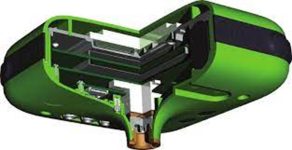In this article, we will discuss the best RTK receiver to purchase in 2023. With many brands and options available, it can be difficult to make a decision. However, by considering the following key factors, you can choose the best receiver for your needs.
Multi-Constellation GNSS Receiver:
This is an important factor to consider in 2023. There are four main positioning satellites: GPS, GLONASS, BEIDOU, and GALILEO. A good GNSS receiver should be able to receive all signals with high quality and fast recording. Most up-to-date GNSS receivers have this option, but it's worth mentioning as it's crucial for purchasing a GNSS receiver.

Mainboard and Company Experience:
This is the second important factor to consider. Different mainboards have different technologies and prices. If two receivers use the same board doesn’t should be have a same quality. Some companies like HORIZON have over 40 years of experience in developing GNSS modules and mainboards. This experience can lead to better quality, even if the specifications on paper are the same. The developed algorithms and quality of the antenna are critical factors that affect the receiver's performance. If you see two receivers with the same mainboard, but one is much cheaper, it likely means that it has a poor quality antenna and won't provide accurate results or reliable results. This factor is important to consider, but requires expertise in GNSS receivers to assess.
quality of antenna and process algorithm tow important item most of the time no one speak about this.
accuracy, reliable data, speed of initializing and good performance in challenging environments.


IMU Option:
An IMU option is necessary, but it depends on the intended usage. Some advertisements claim that an IMU can help fix the receiver when it's near a high wall. While it may work in some cases, IMUs are not typically designed for this purpose. An IMU is more useful for collecting points that are blocked, hidden, or located in dangerous areas. The refresh rate and roll, yaw, pitch accuracy of the IMU also impact the accuracy of the receiver when collecting points in non-upright positions.
Internal Radio
If you want to use a base and rover set and receive correction messages through radio, an internal radio is the first option. Most internal radios have a range of 2 km with the base station. However, new technologies have been developed that overcome this limitation. For example, the T78 RTK receiver can receive correction messages from a base station up to 15 km away. In most cases, this range is sufficient, and you won't need an external radio. However, keep in mind that this option requires special protocols and may not be compatible with other receivers that have multiprotocol options.

Software Ability and User-Friendliness:
Many surveyors do not pay attention to the software, but it's an important factor to consider. A good software should have the ability to collect points, stake out, and support different map formats like Google maps, DXF maps, and others. It should also have the ability to export data in various formats like DXF, SHP, txt, and KML. The software should have a user-friendly interface with separate segments to help new users avoid confusion. It should also support static, PPK, RT, and N-RTK, and have a good COGO menu with various options. Stake out is an important function that should be checked when evaluating the software.

Internal or External Battery:
Whether the receiver has an internal or external battery is not a critical factor. You can choose based on your preference and the type of work you will be doing with the receiver.
But most of the time receiver with internal battery have more capacity than one with external battery.

Many considerations should be made when choosing a good GNSS receiver which is reliable and performs with high accuracy and consistency over long term The experience of the vendor company and the support level should also be important factors when looking at purchase decisions.

